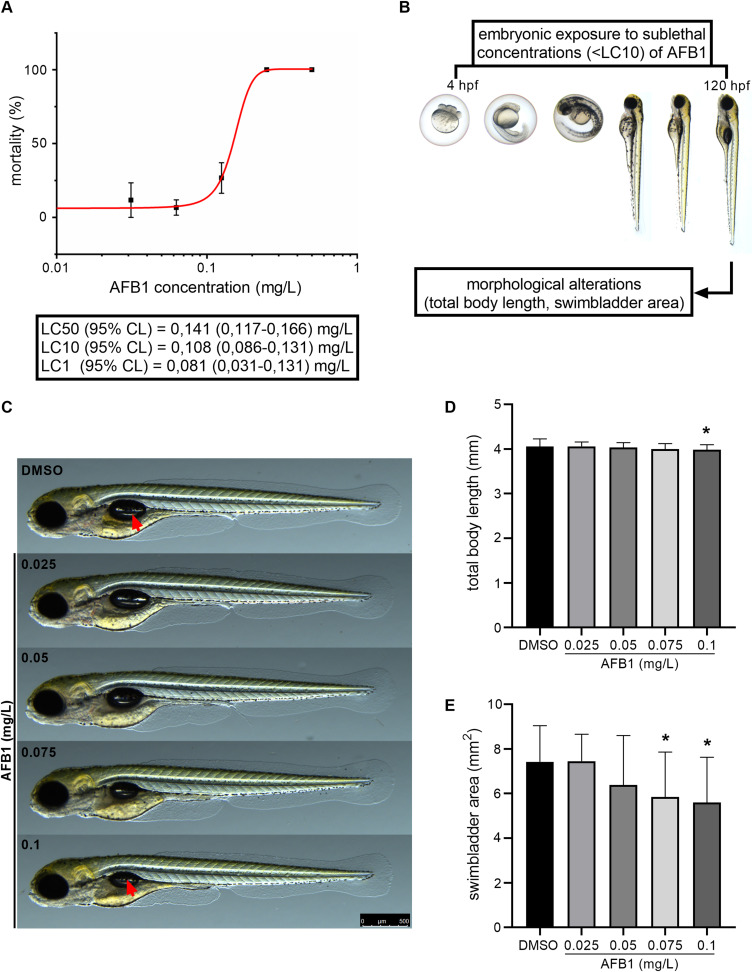Fig. 1 Embryonic exposure to sub-lethal concentrations of AFB1 reduces total body length and swim bladder area. (A) Concentration-response relationship and the estimated LC% values for 120 h toxicity test of zebrafish embryos exposed to AFB1 (n = 6 replicates, n = 10 embryo per replicate). (B) Schematic representation of the applied experimental system. (C) Representative images of 120 hpf zebrafish larvae after embryonic, sub-lethal exposure to AFB1. Red arrows indicate swim bladder. Scale bar = 500 µm. The graphs showing (D) total body length and (E) swim bladder area of control, and AFB1-exposed 120 hpf larvae (n = 3 replicates, n = 10 larvae per replicate). Data represent the mean and SD. “*” indicates statistical significance at p < 0.05 vs. the control (DMSO).
Reprinted from Journal of hazardous materials, 416, Ivanovics, B., Gazsi, G., Reining, M., Berta, I., Poliska, S., Toth, M., Domokos, A., Nagy, B., Staszny, A., Cserhati, M., Csosz, E., Bacsi, A., Csenki-Bakos, Z., Acs, A., Urbanyi, B., Czimmerer, Z., Embryonic exposure to low concentrations of aflatoxin B1 triggers global transcriptomic changes, defective yolk lipid mobilization, abnormal gastrointestinal tract development and inflammation in zebrafish, 125788, Copyright (2021) with permission from Elsevier. Full text @ J. Hazard. Mater.

